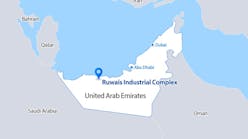© Anhong | Dreamstime
MLP FUNDAMENTALS AND RELATED STRUCTURING AND FORMATION CONSIDERATIONS
JEFFERY K. MALONSON, KING & SPALDING LLP, HOUSTON
It has been a rough three years in the energy sector. We all witnessed the precipitous decline in oil and gas prices and the wide-spread carnage that followed. As of July 2017, about 130 oil and gas producers have filed for bankruptcy since 2015, involving approximately $79.3 billion in debt obligations. While the midstream sector has not experienced the same level of distress experienced by the upstream oil and gas sector, it was not unscathed. As of July 2017, roughly 20 midstream companies have filed for bankruptcy since 2015, involving nearly $20.3 billion in debt obligations.
During the downturn, upstream Master Limited Partnerships (or MLPs), large and small, were disproportionately affected. Unable to hedge a significant portion of future production, they were left almost completely exposed to the sharp, sustained decline in oil and gas prices. Reserves values decreased and borrowing bases were reduced, leaving many producers significantly overdrawn and unable to repay excess borrowings. To conserve capital, many stopped paying quarterly cash distributions and slashed capital expenditures. In the end, it was not enough. Unable to stem the tide, virtually all fell into bankruptcy.
Although few midstream MLPs have sought bankruptcy protection, it is unclear whether the extreme dislocation in the upstream sector will adversely impact throughput volumes in the future. Moreover, a number of analysts predict that the lack of significant capital available to fund infrastructure projects may negatively affect future takeaway capacity in some areas.
In the aftermath of the downturn, some are speculating that the upstream MLP may never recover, at least not in its traditional form. As it is, the midstream MLP has always been the most reliable of the bunch - yet, many anticipate the midstream investor base will be more discriminating, favoring midstream companies with strong sponsors and attractive infrastructure projects. The general consensus is that there is a market for "brand names" in the space.
So, why write about MLPs? Fair question. Reflecting on the significant contributions made by MLPs in the energy sector can be therapeutic in turbulent times. As some begin to cast doubt on the durability of the structure, we should remind them that the MLP has been solely responsible for funding the development of oil and gas pipeline infrastructure in the United States for nearly 30 years. But more than that, it is an opportunity to get back to basics.
This article briefly discusses certain fundamental principles of MLPs, and then it identifies and explains common structuring and formation considerations designed to support the underlying objectives of the MLP. It is important to understand that MLPs are flexible and should be structured around the specific cash flow characteristics of MLP assets. If we have learned anything from the latest down cycle, it is that we should endeavor to structure MLPs to withstand even the harshest price environments.
MLP FUNDAMENTALS
MLPs are publicly traded limited partnerships that are listed on a national securities exchange - typically, the NYSE or Nasdaq. Similar to stock in a corporation, interests in MLPs (referred to as "units") are bought and sold in public offerings and over the counter through ordinary brokerage transactions, similar to stock in a corporation.
The primary objective is to structure and form a tax efficient investment vehicle that generates sufficient current cash flows to pay distributions to unitholders, has low capital expenditure requirements to grow its asset base, and has significant long-term growth opportunities to increase cash distributions to unitholders over time.
Designing an MLP that achieves the objectives of the sponsor and meets the expectations of investors requires a detailed analysis of the MLP's expected cash flows. It is critical that the MLP's stated cash distribution policy reflects the projected cash flow profile of MLP. For example, midstream companies that are supported by long-term, fee-based contracts typically generate stable cash flows and, therefore, are suitable for a distribution policy that pays a minimum quarterly distribution. On the other hand, companies with significant unhedged commodity price exposure are not good candidates for a minimum quarterly distribution policy - rather, a more appropriate distribution policy would be variable cash distributions.
Recognizing that there are material, sometimes subtle variations in asset characteristics, cash flow volatility, and the perceived ability to mitigate cash flow volatility over the long term are prerequisites to selecting an appropriate MLP structure.
STRUCTURING CONSIDERATIONS
Organizational structure of an MLP
The basic organizational structure of a MLP involves two tiers, with the MLP being a limited partnership whose sole asset is the ownership of all of the membership interests in a limited liability company or all of the partnership interests in another limited partnership that owns and operates the assets of the operating business (See Figure 1).
The general partner of the MLP typically owns a non-economic interest in the MLP, and may own rights to increasing portions of cash distributed by the MLP, which are referred to as "incentive distribution rights." The limited partnership interests in the MLP are allocated between the sponsor of the MLP and the public investors.
The two-tier structure is based upon the desire for operational, legal, tax, and financial flexibility. For instance, the two-tier structure allows a MLP to effect "double breasted" financing - debt financing at the subsidiary level and debt financing at the MLP, which is structurally subordinated to subsidiary level debt. Additionally, the two-tier structure enables the MLP to segregate assets and debt among multiple subsidiaries for operational accountability, liability, regulatory, tax, or various other reasons.
"In the aftermath of the downturn, some are speculating that the upstream MLP may never recover, at least not in its traditional form. As it is, the midstream MLP has always been the most reliable of the bunch - yet, many anticipate the midstream investor base will be more discriminating, favoring midstream companies with strong sponsors and attractive infrastructure projects. The consensus is that there is a market for 'brand names' in the space."
Economic structure of an MLP
Cash distribution policy - The economic structure of an MLP is centered around cash flow and the expectation of cash distributions. Under the terms of the partnership agreement, an MLP is required to distribute all "available cash" to its unitholders, quarterly or monthly.
• Minimum quarterly ddistributions - Businesses that generate stable and consistent cash flow from quarter-to-quarter are able to commit to paying a "minimum quarterly distribution" to unitholders. In the offering documents, the MLP makes a statement as to its "intention" to distribute a specific minimum quarterly distribution on each outstanding unit. This stated intention is the basis for the "yield" at which the MLP is marketed to investors. When the MLP intends to pay a minimum quarterly distribution to its unitholders, the sponsor will retain a portion of its equity in "subordinated units" to support the distribution on the common units. In exchange, the sponsor will receive incentive distribution rights.
• Variable distribution MLPs - Businesses that do not generate stable or consistent cash flow from quarter-to-quarter have gone public as "Variable Distribution MLPs." A Variable Distribution MLP is simply a publicly traded limited partnership with a policy of paying quarterly distributions of all reasonably distributable cash, without maintaining coverage or borrowing to pay consistent distributions from quarter-to-quarter. Instead, the focus is on optimizing business results and maximizing total distributions over time.
• Subordinated units - The MLP will issue two classes of limited partnership interests in an IPO, subordinated units and common units. In the offering, common units will be issued to the public investors, and the sponsor will receive both common units and subordinated units that are convertible into common units if certain conditions are satisfied. By their terms, common units are entitled to receive minimum cash distributions before the subordinated units are entitled to receive any cash distributions. Consequently, the sponsor bears a disproportionate risk that there will be a shortfall of cash to pay the minimum distribution on all of the common units and all of the subordinated units - that is, there will be less than 100% distribution coverage.
• Incentive distribution rights - Incentive distribution rights are designed to encourage the general partner (owned and controlled by the sponsor) to operate the MLP in a manner that will increase cash flow from operations and cash distributions to the limited partners. he owner of the incentive distribution rights is entitled to receive an increasing percentage (historically, up to 50%) of the cash distributions above specified levels or targets. Table 1 illustrates the allocation of distributions as distribution thresholds are satisfied.
T1: Marginal percentage interest in distributions | ||
Marginal percentage interest in distributions | ||
Top quarterly distribution target amount | Unitholders | GP & IDRs |
Up to 1st Target (115% of MQD) | 100% | 0% |
Above 1st Target, up to 2nd Target (125% of MQD) | 85% | 15% |
Above 2nd Target up, to 3rd Target (150% of MQD) | 75% | 25% |
Above 3rd Target | 50% | 50% |
Again, incentive distribution rights are designed to encourage the general partner to increase cash flows from operations and distribute increasing amounts of cash to limited partners. Some practitioners also suggest that incentive distributions compensate the sponsor for sharing a disproportion downside risk associated with subordinated units. The flaw in this theory is that subordination generally ends (subordinated units convert to common units) when certain conditions are met, while incentive distributions are perpetual.
FORMATION CONSIDERATIONS
Qualifying income limitations
To be treated as a partnership for US federal income tax purposes - and receive "pass-through" tax treatment - a MLP must satisfy the "qualifying income test" set forth in Section 7704 of the Internal Revenue Code of 1986, as amended. Pass-through taxation means that no federal income tax is paid at the partnership level. Rather, income is taxed only at the individual partners level. If a publicly traded partnership fails to satisfy the qualifying income test, then it will be treated as a corporation for US federal income tax purposes, and any income will be subject to both corporate level income taxes and individual income taxes.
The qualifying income test is satisfied if at least 90% of the MLP's gross income for each taxable year is qualifying income. Generally speaking, qualifying income is income from natural resource activities - dividends -interest (other than interest generated by a financial or insurance business) - real property rents - income from the sale of real property - gain from the sale of assets that generate qualifying income - income from the sale of stock or units, and - gains from commodities - futures - forwards, and - options, subject to certain limitations. Natural resource activities include, exploration, development, mining or production, processing, refining, transportation, storage, and marketing of any mineral or natural resource.
Tax efficiency
It is critical for those evaluating the MLP structure to involve tax counsel early in the process. In addition to the qualifying income analysis, tax counsel will outline and diagram the steps required to ensure that assets are contributed to the MLP on a tax deferred basis. Likewise, tax counsel will determine whether and to what extent the MLP can dividend cash to the sponsor on a tax-deferred basis at the time of the initial public offering.
The tax analysis also requires the sponsor and its advisors to analyze the expected amount of "tax shield" provided to investors over a two- to three-year period following the IPO. Tax shield is the difference between the amount of cash distributed by the MLP to its limited partners and the amount of income allocated by the MLP to the limited partners. The excess of the cash distributed over the amount of income allocated is treated as a non-taxable return of basis. For example, if you purchase a unit for $10 with a 10% yield and the tax shield is 80%, then a cash distribution of $1.00 would require the MLP to allocate $0.20 in income, with the remaining $0.80 treated as a non-taxable return of basis.
Limited investor base
Although there is a growing base of institutions investing in MLP units, the market for MLP units is largely comprised of individuals residing in the United States. Tax-exempt investors avoid investing in MLP units because the distributions generate unrelated business taxable income, or UBTI, which is subject to tax in the hands of such entities. Regulated investment companies, or RICs, find investing in MLP units less attractive because of the strict regulatory limitations on the size of the RIC's investment in MLP units.
Adverse tax consequences for foreign investors has substantially limited the MLP investor base to US residents. A foreign person investing in a MLP doing business in the US is himself deemed to be engaged in the business in which the MLP is engaged - consequently, the foreign investor would be required to file a return in the US to report and pay taxes on cash distributions received from the MLP. What is more, the MLP is required by law to withhold taxes at the maximum rate from the foreign investor's cash distributions, forcing the investor to file a US tax return to request what would likely be a significant refund.
Federal securities laws
Preparing for and completing an initial public offering is no small undertaking and requires a significant amount of time and resources from the sponsor and the management team. Upon completion of the IPO, the MLP will be a "reporting company." As a reporting company, the MLP will be required to make periodic filings with the United States Securities and Exchange Commission - annual, quarterly, and current reports.
Companies are wise to plan ahead and increase staff to ensure they are able to satisfy the new regulatory obligations. Allocating resources to meet the burdens and challenges of running a public company will cost a lot of money, failure to do so may cost a lot more.
CONCLUSION
Cash flow. Cash flow. Cash flow. Understanding the cash-flow profile associated with a set of assets or a segment of the energy sector is a prerequisite to selecting a distribution policy. Once you have identified the appropriate policy, the rest is belts and suspenders. That is, the other economic considerations are available to "support" the selected policy.
ABOUT THE AUTHOR
Jeff Malonson is a partner in King & Spalding's corporate practice group based in the firm's Houston office. He focuses his practice on capital markets, mergers and acquisitions, and governance matters. His capital markets practice includes representing public and private corporations, master limited partnerships (MLPs), investment banking firms, and private equity firms in initial public offerings (IPOs) primarily in the energy sector.





